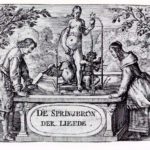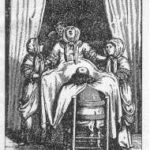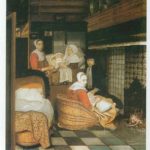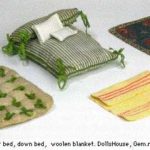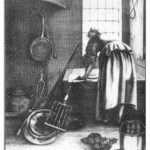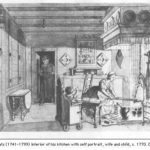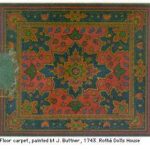Mary Sharratt reports
 My news is that I'll
be speaking at Capturing Witches, an interdisciplinary academic conference commemorating the 400th anniversary of
the Pendle Witch Trials, at Lancaster University, August 17-19. There will be distinguished speakers from all over the world addressing topics as diverse as historical witchcraft, gothic fiction, Neopagan practice, and the horrifying persecution of so called "child witches" in modern day Nigeria.
My news is that I'll
be speaking at Capturing Witches, an interdisciplinary academic conference commemorating the 400th anniversary of
the Pendle Witch Trials, at Lancaster University, August 17-19. There will be distinguished speakers from all over the world addressing topics as diverse as historical witchcraft, gothic fiction, Neopagan practice, and the horrifying persecution of so called "child witches" in modern day Nigeria.My forthcoming book ILLUMINATIONS: A NOVEL OF HILDEGARD VON BINGENwill be published by Houghton Mifflin Harcourt on October 9 and will explore the life of the 12th century visionary abbess, composer, polymath, and powerfrau.
On October 7, Saint Hildegard will be elevated to Doctor of the Church. Currently there are only thirty-three Doctors of the Church and only three are women. This is a solemn title given to theologians who have made a significant impact.
My book tour will also be launched on October 9 at Common Good Books in Saint Paul, Minnesota.
From Sandra Gulland:
My own news is in the "soon to come" category!
I am releasing e-book editions of all my novels in all territories outside North America (where they are already published). This will be under my own imprint—Sandra Gulland Ink—so I'm quite excited about it. For information see http://www.sandragulland.com/books/sandra-gulland-ink/
Also, my next novel, a second one set in the Court of Louis XIV, the Sun King, is in final draft, and will be published in May of next year.
And, I've contracted with Penguin to write two Young Adult novels, at least one of which will be the story of Hortense, Josephine Bonaparte's daughter.
Our newest Hoyden Dee Swift writes:

 My next book The Gilded Lily, set in
Restoration London in the little ice age finally has its covers.Two very different
views of the same book, but both reflect it very well I think. It tells the
story of two sisters - one pretty and one plain, on the run and looking to
re-invent themselves and find their fortune in fashionable society. How will
they fare? And when one begins to rise and the other to fall, and their
relationship crumbles,will they help each other when danger strikes?
My next book The Gilded Lily, set in
Restoration London in the little ice age finally has its covers.Two very different
views of the same book, but both reflect it very well I think. It tells the
story of two sisters - one pretty and one plain, on the run and looking to
re-invent themselves and find their fortune in fashionable society. How will
they fare? And when one begins to rise and the other to fall, and their
relationship crumbles,will they help each other when danger strikes?
It's publication date is 13th
September (UK) and 26th November (US)
Meanwhile, I've Just finished my third novel, working title "A Divided Inheritance", which is set in England and Spain and will be published by Macmillan in 2013.
Alison Stuart reports:
My next book, GATHER THE BONES comes out in September 2012 from Lyrical Press. Sadly, it is not a seventeenth century story. I am traversing Downton Abbey territory (if you can imagine Downton Abbey with ghosts).
 Set in 1923 against a background of the Great War, grieving war widow, Helen Morrow and her husband’s cousin, the wounded and reclusive Paul are haunted not only by the horrors of the Great War but ghosts from another time and another conflict. A coded diary provides the clues to the mysterious disappearance of Paul’s great grandmother in 1812. As the desperate voice of the young woman reaches out to them from the pages, Paul and Helen are bound together in their search for answers, not only to the old mystery but also the circumstances surrounding the death of Helen’s husband at Passchandaele in 1917. As the two stories become entwined, Paul and Helen will not find peace until the mysteries are solved.
Set in 1923 against a background of the Great War, grieving war widow, Helen Morrow and her husband’s cousin, the wounded and reclusive Paul are haunted not only by the horrors of the Great War but ghosts from another time and another conflict. A coded diary provides the clues to the mysterious disappearance of Paul’s great grandmother in 1812. As the desperate voice of the young woman reaches out to them from the pages, Paul and Helen are bound together in their search for answers, not only to the old mystery but also the circumstances surrounding the death of Helen’s husband at Passchandaele in 1917. As the two stories become entwined, Paul and Helen will not find peace until the mysteries are solved.
And in late breaking news: Alison has sold a "time slip" novella (with its feet in the seventeenth century) to Lyrical Press.
Last but by no means least KIM MURPHY:
Kim reports that she has been working hard on her non fiction foray into the American Civil War. In the meantime her book THE DREAMING: WALKS THROUGH MIST received an Honorary Mention in ForeWord magazine's Book of the Year Awards. Congratulations, Kim!That's it from the Hoydens for now...watch out for all these exciting new releases in the next 6 months!







